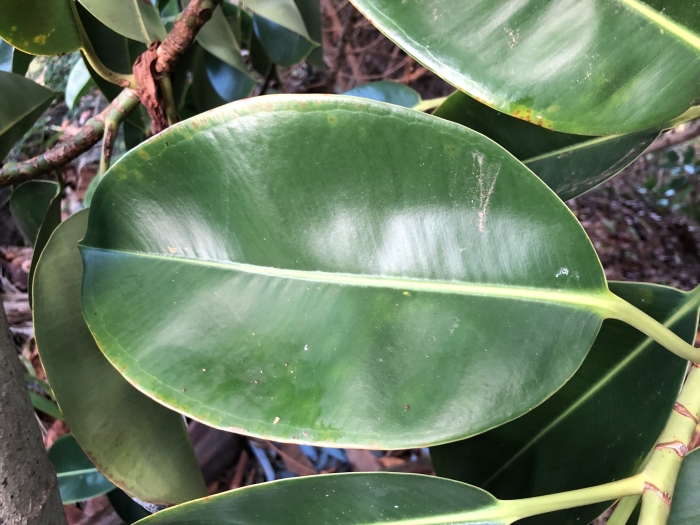Moreton Bay Fig
(Ficus macrophylla)
Moreton Bay Fig (Ficus macrophylla)
/
/

akt2
CC BY 4.0
Image By:
akt2
Recorded By:
Copyright:
CC BY 4.0
Copyright Notice:
Photo by: akt2 | License Type: CC BY 4.0 | License URL: http://creativecommons.org/licenses/by/4.0/ | Rights Holder: akt2 | Publisher: iNaturalist | Date Created: 2019-12-27T17:52:38Z |























Estimated Native Range
Summary
Ficus macrophylla, commonly known as the Moreton Bay fig, is an evergreen tree native to rainforests and coastal forests in eastern Australia, from the Wide Bay–Burnett region in Queensland to the Illawarra in New South Wales. It can grow over 200 feet tall with a crown that may spread wider than its height, making it one of the most imposing fig species. The Moreton Bay fig is renowned for its massive, buttressing roots that provide support to its enormous trunk and broad canopy. Its large, glossy green leaves are accompanied by small, inedible fruits that attract a variety of wildlife.
The Moreton Bay fig is a popular ornamental tree in large spaces due to its majestic appearance and shade-providing canopy. It is often found in parks, botanical gardens, and urban landscapes. This species thrives in well-drained, fertile soils and requires ample space to accommodate its extensive root system. It prefers full sun to part shade and can tolerate a range of soil conditions, though it does best with regular watering during dry periods. While it is a low-maintenance tree once established, its aggressive roots can cause problems with nearby structures and pavements. In regions outside its native habitat, the Moreton Bay fig can become invasive, so it is crucial to consult local guidelines before planting.CC BY-SA 4.0
The Moreton Bay fig is a popular ornamental tree in large spaces due to its majestic appearance and shade-providing canopy. It is often found in parks, botanical gardens, and urban landscapes. This species thrives in well-drained, fertile soils and requires ample space to accommodate its extensive root system. It prefers full sun to part shade and can tolerate a range of soil conditions, though it does best with regular watering during dry periods. While it is a low-maintenance tree once established, its aggressive roots can cause problems with nearby structures and pavements. In regions outside its native habitat, the Moreton Bay fig can become invasive, so it is crucial to consult local guidelines before planting.CC BY-SA 4.0
Plant Description
- Plant Type: Tree
- Height: 6-10 feet
- Width: 7-15 feet
- Growth Rate: Moderate
- Flower Color: N/A
- Flowering Season: Spring, Summer
- Leaf Retention: Evergreen
Growth Requirements
- Sun: Full Sun
- Water: Medium
- Drainage: Medium
Common Uses
Bird Garden, Low Maintenance
Natural Habitat
Rainforests and coastal forests in eastern Australia
Other Names
Common Names: Moreton Bay Fig, Large-leaved Fig, Black Fig, Permite
Scientific Names: , Ficus macrophylla, Urostigma platypodum f. majus,
GBIF Accepted Name: